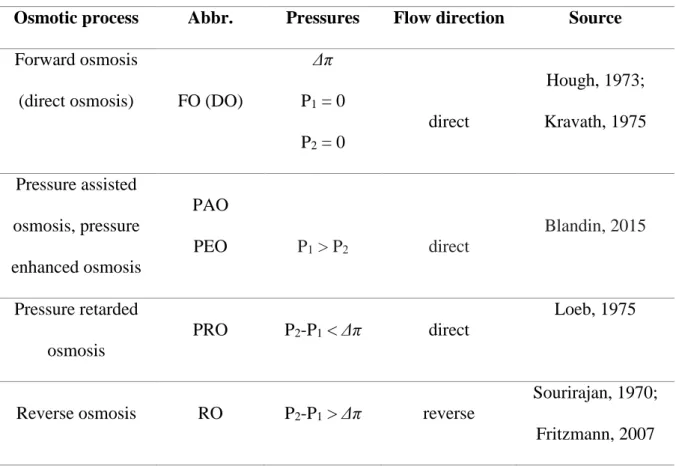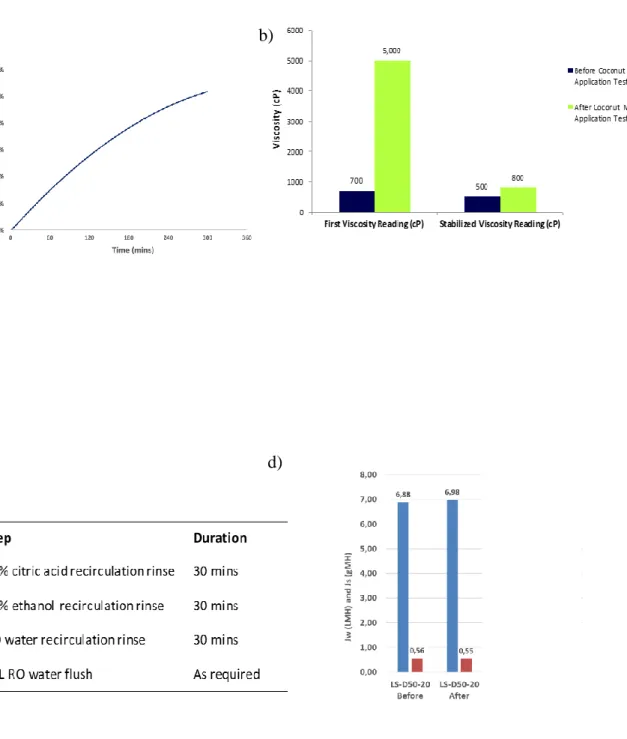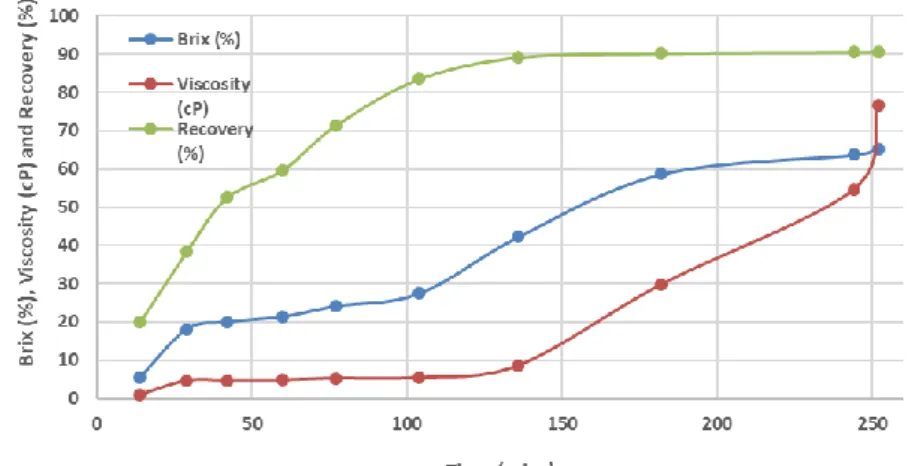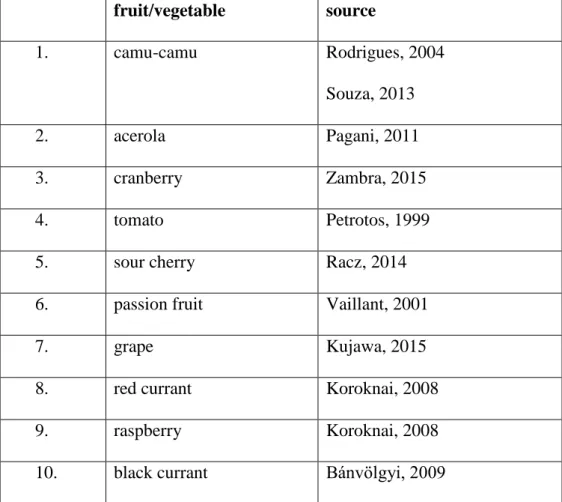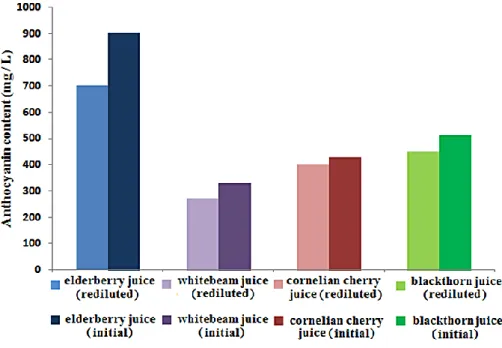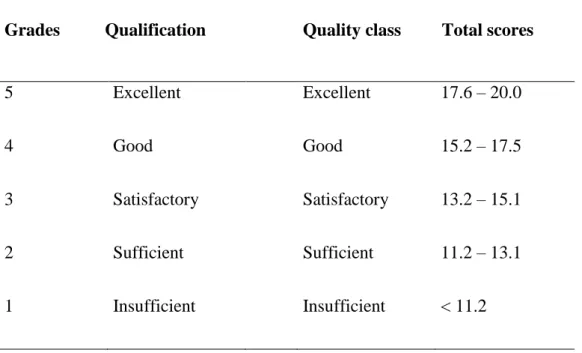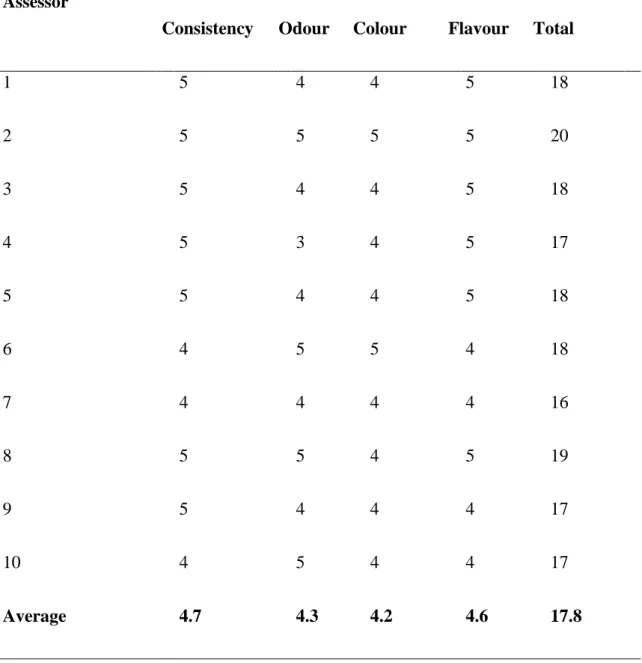CHAPTER 12
Osmotic driven membrane processes for separation of special food compounds
Katalin Belafi-Bako
University of Pannonia, Veszprem, Hungary
Irena Petrinić
University of Maribor, Maribor, Slovenia
Claus Hélix-Nielsen
Technical University of Denmark
Guofei Sun
Aquaporin Asia Pte. Ltd, Singapore
Ye Wee Siew
Aquaporin Asia, Pte, Ltd, Singapore
Simon Alvisse
Aquaporin Asia, Pte, Ltd, Singapore
Nguyen Xuan Tung
Aquaporin Asia, Pte, Ltd, Singapore
Andras Boor
University of Pannonia, Veszprem, Hungary
Nandor Nemestothy
University of Pannonia, Veszprem, Hungary
Abstract
Among membrane separation processes [Crespo, 1994; Li, 2008; Field, 2017] osmotic driven techniques are considered as innovative potential industrial methods, although the principle of these procedures has been known for long. Their wide industrial application is, however, hindered by mainly technical difficulties (e.g. the lack of proper membrane materials). In this chapter two promising osmotic membrane processes are presented, where forward osmosis and membrane osmotic distillation were applied for up-concentration of a coconut milk solution and juices obtained from various colourful wild fruits, respectively.
Key Words
osmosis, water transport, wild-grown berry fruits, coconut milk
12.1 Introduction
The phenomenon called “osmosis” is the selective transport of a solvent – mostly water – through a semipermeable membrane from a solution containing solute of lower concentration into a solution containing solute of higher concentration (draw solution) [Haynie, 2001]. The layer separating the two solutions is the membrane. Fundamentally there are two distinct ways of water transport through a membrane driven by osmosis: either (i) in liquid state or (ii) in vapour phase. In case of (i) selective membranes should be used which are able to retain the salts, while water can be passed. In case of water vapour transport (ii) hydrophobic porous (micro- or ultrafiltration) membranes are applied.
Regarding (i) case the driving force of the transport can be defined by the relation of the hydrostatic pressure difference and the osmotic pressure difference between the two sides of the membrane.
𝐽𝑤 = 𝐴(𝜎Δ𝜋 − Δ𝑝ℎ𝑦𝑑𝑟) (12.1)
where Jw is the water flux (kgm-2s-1), A is the membrane permeability constant (s m-1), σ is the reflective constant (-), Δπ is the osmotic pressure difference (Pa) and Δphydr is the hydrostatic pressure difference (Pa) between the two sides of the membrane. Δπ osmotic pressure is caused by the difference between the feed and draw (osmotic agent) solutions. While Δphydr is the difference of the pressures applied in the feed side (P1) and the draw regime (P2).
Based on the equation four distinct processes can be defined [Cath, 2006]. In Table 1 these techniques are summarized. The methods are characterised by the relations of the pressures (P1, P2 and Δπ) which determine the flow direction, as well.
In the first case, forward osmosis (FO) the hydrostatic pressure is the same in both sides,
“conventional” osmosis takes place, water molecules leave from the solution of lower concentration into the draw solution. In case of pressure assisted osmosis (PAO) a mild pressure is applied on the solution of lower concentration (P1), enhancing the rate of osmosis. Applying pressure on the other side (the solution of higher concentration, i.e. draw solution – P2), as well, pressure retarded osmosis (PRO) and reverse osmosis (RO) processes can be set up. If the pressure used is lower than the osmotic pressure (P2-P1 < Δπ) water will flow into the draw solution (diluting it), and the volume of this flow can be so high that it may be exploited for power generation. This is the principle of osmotic power [https://www.power- technology.com/projects/statkraft-osmotic/].
Firstly Pattle described the interesting phenomena: when a river mixes with the sea, a source of power is formed in terms of the lost osmotic pressure [Pattle, 1954]. However a practical method of exploiting it by using selectively permeable membranes was developed much later, only in the mid ‘70s. The generation of electric energy through PRO was developed by Sidney Loeb [Loeb, 1975]. The next step was done by a Norwegian company, Statkcraft that filed the first patent for osmotic power membranes in 2003. Then the world’s first osmotic power or salinity gradient power generation plant (a prototype) was built in Tofte (Norway) by the same company, which was opened in 2009. The prototype plant has a designed capacity to generate 10kW of electricity. The plant generates renewable and emissions-free energy and thus contributes to eco-friendly power, sometimes called blue energy, as well, since no CO2
emission occurs.
Finally, when high pressure is applied in the secondary side (P2), this is reverse osmosis (RO), one of the most widely used membrane techniques [Fritzmann, 2007]. Reverse osmosis belongs to the “pressure driven membrane processes”, where the mechanism of the separation is a type of filtration. In reverse osmosis the membrane retains (almost) all the dissolved solutes, even the monovalent ions, small molecules, and the pure solvent pass through the membrane. Thus it is a suitable method for water
purification. Desalination of seawater can be accomplished by RO and it is used commonly to produce potable water.
To picture about the volume of desalination by RO nowadays a couple of figures are presented [http://idadesal.org/] here:
the total number of desalination plants worldwide (2015) is 18,426;
the global capacity of commissioned desalination plants (2015) is more than 86.8 million cubic meters per day;
the number of countries where desalination is practiced is 150;
more than 300 million people around the world who rely on desalinated water for some or all their daily needs.
Table 12.1: Osmotic processes – water transport in liquid phase
Osmotic process Abbr. Pressures Flow direction Source Forward osmosis
(direct osmosis) FO (DO)
Δπ P1 = 0 P2 = 0
direct
Hough, 1973;
Kravath, 1975 Pressure assisted
osmosis, pressure enhanced osmosis
PAO
PEO P1 > P2 direct
Blandin, 2015
Pressure retarded osmosis
PRO P2-P1 < Δπ direct
Loeb, 1975
Reverse osmosis RO P2-P1 > Δπ reverse
Sourirajan, 1970;
Fritzmann, 2007
Beyond the osmotic membrane processes mentioned earlier, there are some more similar techniques, which exploits osmotic power. Osmotic evaporation (OE) or osmotic distillation (OD) [Hogan, 1998;
Alves, 2002] is a membrane process where water transport occurs, as well, but in gaseous phase (ii).
Water vapour passes through the pores of the membrane. The driving force is again the osmotic power, since a draw solution (osmotic agent) is applied in the secondary side of the membrane.
The effectiveness of osmotic distillation can be enhanced when it is combined with membrane distillation (MD) [Belafi-Bako, 2006; Nagaraj, 2006; Koroknai, 2006; Wang, 20001]. The coupled process called membrane osmotic distillation (MOD) exploits the thermal effects, i.e. the two solutions are thermostated separately at different temperatures: the draw solution is the cold side (chilled), while
the feed solution is the warm side (heated). Thus the driving forces are added and the water flux can increase.
Both FO, (PAO) and MOD (OD) are considered as effective membrane processes for water removal, which can be applied for the concentration of various aqueous solutions [Cuperus, 1998; E.-Abassy, 2013, Jiao, 2004]. Moreover the methods are operated under mild conditions, additives are not needed and hazardous materials are not produced, thus the techniques are regarded environmental-safe, attractive solutions for numerous kinds of separations.
12.2 Forward osmosis for up-concentrating food compounds
The use of FO in the form of concentrating freshly squeezed fruit juices using semipermeable cloths bag containing the juice immersed in a concentrated brine solution probably has a long agricultural history [Cussler, 1984]. One of the first scientific investigations on the application of FO for food concentration was conducted by Leonard Wickenden, an American chemist and organic gardening advocate. On January 11, 1934 Wickenden filed a patent application (which was granted in 1938) in which he discloses the use of a semipermeable membrane made of parchment or cellophane for up- concentration of fruit juices described using both batch- and continuous mode embodiments of the process [Wickenden 1934]. He specifically described the osmotic concentration of orange juice with 13°
Brix as feed solution using a cellophane membrane and 80° Brix syrup as draw solution. He also describes an up-concentration of coffee from 15% solids to 75% solids producing a concentrate with an excellent flavor, and a 7:1 volume ratio up-concentration of milk. The formed milk concentrate had no cooked flavor and its color was note altered, except from the natural color that became darker by the concentration. The citations not only point to the potential of FO in liquid food up-concentration, but also to two major technological challenges: 1): how to minimize undesired flux of solutes from the feed to the draw solution; and 2): how to minimize undesired reverse solute flux from the draw to the feed solution.
Both effects can have detrimental impact on the up-concentrated product such as the loss of essential flavors/fragrances and/or contamination by draw solution agents (e.g. salts).
With the advent of cellulose acetate membranes, the concept gained momentum [Popper et al. 1966].
However, the problem of reverse solute flux remained a serious issue thus impairing the sensorial quality of the final up-concentrated product. In the 1990s, membranes with improved selectivity combined with lower internal concentration polarization (which will diminish the effective osmotic driving force) in the membrane material became available. This has spurred a new interest in FO for achieving high levels of concentration for a variety of liquid foods and food ingredients, and the research area has been described in several reviews [Petrotos & Lazarides, 2001; Rastogi, 2016; Terefe et al. 2016].
An attractive liquid food to up-concentrate is coconut milk. Coconut milk and cream is found in many traditional Indian and Southeast Asian cuisines, in sweet and savory dishes. Today Indonesia and Thailand are some of the world’s largest exporters and consumers of coconut milk. Coconut milk beverages, containing less than 1-2% fat, are increasingly being recognized as competitors to soya and almond milk products in the United States and Europe [Tetra Pak, 2016]. Also, coconut milk is gaining interest as a dietary substitute for lactose intolerant consumers, and many brands are already diversifying their beverage offerings to include coconut milk. Recent studies have also pointed the beneficial effects of coconut milk oil medium chain triglycerides for treating diseases such as dementia (Alzheimer’s disease) [Henderson, 2004]
However, coconut milk is a challenging feed solution. It is a thixotropic fluid (similar to yoghurt), a type of non-Newtonian fluid with time-dependent viscosity where viscosity diminishes with time when the fluid is subjected to a constant speed gradient. As dewatering will lead to an increase in viscosity the FO membrane module must be designed to accommodate this increase.
Figure 12.1: FO up-concentration of coconut milk with batch feed and continuous draw in a co-current flow arrangement. Feed solution: 10 kg coconut milk (24% fat content). Draw solution: 1M NaCl
solution. Membrane: Two Aquaporin Inside™ D50 Tubular FO modules in parallel (0.7m2 total membrane area). Feed flow: 0.7 LPM (peristaltic pump) per D50 (lumen flow). Draw flow: 0.5LPM
(gearing pump) per D50 (shell flow). Feed and Draw inlet pressures maintained at <1 and <0.1 bar respectively. Experiments were conducted at an ambient temperature of 17 °C.
In a recent feasibility study, up-concentration of a coconut milk solution using Aquaporin Inside™
Tubular FO membrane module was attempted (Fig. 12.1). The (feed) was operated in a batch mode to attain a higher recovery. The draw solution was operated in a continuous mode to maintain a sufficient driving force. The experiment was performed in FO mode where active layer of the membrane is facing the feed side. Experimental details are summarized in Fig. 12.1.
With batch concentration operations and 1M NaCl draw solution, it was possible to up-concentrate the 10 kg coconut milk 2x corresponding to approximately 50% recovery. Water is recovered from the coconut milk to the draw solution with time (Fig. 12.2a). The initially measured viscosity increased from 700 to 5000 cP whereas the equilibrium viscosity increased from 500 to 800 cP reflecting the thixotropic nature of the coconut milk (Fig. 12.2b). For sanitary reasons it is crucial that the membrane modules (and any food contact material) can be cleaned. This was tested using a standard cleaning protocol, see Fig.
12.2c, and the results are shown in Fig. 12.2d. As can be seen, both the water flux Js and reverse salt flux
Js were similar before and after cleaning demonstrating the feasibility to use tubular FO modules for coconut milk up-concentration.
a) b)
c) d)
Figure 12.2(a): FO up-concentration of coconut milk. Recovery as a function of time. (b): Viscosity measurements before after and FO up-concentration. (c): Cleaning protocol used. (d): Membrane integrity
tests performed with DI water as Feed and 1 M NaCl as Draw.
Besides coconut milk also coconut water is of interest as feed in FO up-concentration. Coconut water can be used directly as a nutritional drink and its sodium and potassium content makes it an ideal drink for rehydration. However, it is not commercially viable to transport large amounts of single strength coconut water (92-95% water content) in bulk to markets where coconuts are not readily available [Tetra Pak, 2016]. Thus, it is desirable to be able to concentrate coconut water to higher soluble solid levels of 60-65 °Brix (or 35-40% water content), saving transportation costs.
Current state of the art for producing coconut water concentrate, fresh coconut water is first passed through a pre-concentration stage of RO to increase the total solids. Then, it goes into a multiple effect evaporation stage to achieve 60-65 °Brix at which concentration, the coconut water is to some degree self- preserving [Tetra Pak 2016]. A proof-of-concept experiments was conducted where a concentration
>60 °Brix achieved using Aquaporin Inside™ FO membranes (Fig. 12.3). Both results obtained with coconut milk and water demonstrated the promising application of FO in liquid food up-concentrations.
Figure 12.3: FO up-concentration of coconut water. Batch test for Feed and single pass for Draw. (Draw solution: 2.5M MgCl2)
12.3 Membrane osmotic distillation
MOD – as mentioned earlier – could be applied for concentration of various aqueous solutions containing heat-sensitive compounds, which can be easily found in agro-food processes. One of the typical applications is the concentration of fresh juices from various fruits and vegetables [Kujawa, 2015], e.g. juices from camu-camu [Rodrigues, 2004; Souza, 2013], acerola [Pagani, 2011], sour cherry [Racz, 2014], passion fruit [Vaillant, 2001], cranberry [Zambra, 2015], tomato [Petrotos, 1999]….etc. (Table 12.2)
Table 12.2: MOD for concentration of various juices of fruits and vegetables
fruit/vegetable source
1. camu-camu Rodrigues, 2004
Souza, 2013
2. acerola Pagani, 2011
3. cranberry Zambra, 2015
4. tomato Petrotos, 1999
5. sour cherry Racz, 2014
6. passion fruit Vaillant, 2001
7. grape Kujawa, 2015
8. red currant Koroknai, 2008
9. raspberry Koroknai, 2008
10. black currant Bánvölgyi, 2009
In our laboratory concentration of juices from colourful fruits by MOD were studied earlier [Koroknai, 2008]. These fruits – belonging to berry types: black- and redcurrant, raspberry, blackberry – have considerable antioxidant capacity due to their polyphenolic, anthocyanin, flavonoid content and other special, valuable oxidant compounds [Koroknai, 2008]. The antioxidant capacity (scavenging free radicals) can be measured by ferric reducing ability of plasma (FRAP) [Benzie, 1996], while total phenol and anthocyanin content (having antioxidant capacity) can be determined by Folin-Ciocalteu reagent [Singleton, 1999] and an UV spectrometric method [Giusti, 2000], respectively. Our experiments have
proven that the mild membrane technique, MOD is able to preserve almost all of these valuable compounds during the concentration process.
The range of these colourful berry fruits has been recently extended with similar, but wild-grown species [Belafi-Bako, 2011; Boor, 2016], like elderberry (Sambucus nigra), cornelian cherry (Cornus mas), common whitebeam (Sorbus aria) and blackthorn (Prunus spinosa). These fruits are rich in colouring compounds and have antioxidant capacities, as well [Dawidowith, 2006; Serpil, 2008; Sidor, 2014]. The fruit plants are native in Hungary and grown here for long. They have been used traditionally for home-made manufacturing of jam, stewed fruit, marmalade, syrup, cookies, pastries and soft drinks.
The fresh juices were collected in the ripening season in the Transdanubian region (nearby) and – after removing the seeds – were pressed in a laboratory scale mechanical squeeze to get the fresh juices. Then the juices were stored in the deep-freezer until the measurements.
The juices were concentrated by MOD in laboratory scale experiments and the preservation of antioxidant capacity was measured.
The measurements were carried out [Belafi-Bako, 2011] in a hollow fibre membrane module (Microdyn), using hydrophobic polypropylene membrane, with a membrane surface area of 70 cm2. The 6 M CaCl2 draw solution was circulated in the secondary side of the module (shell side) at 18 oC, while the fruit juices to be concentrated were circulated in the primary side (in the tubes) at 35 oC temperature. Both solutions were circulated by peristaltic pumps on a counter current mode of operation with a flow rate of 10 l/h. To follow the water transport the weight of the fruit juice was in-line measured and the total solid substance (TSS) of the samples was determined.
In Fig 12.4 the changes of volume and TSS of the elderberry juice are presented as a function of time as an example. As can be seen elderberry juice was managed to concentrate considerable up to 54 % TTS.
The time courses of the concentration processes of the other juices were similar.
Figure 12.4: Changes of volume and TSS of elderberry juice during the concentration process
The results of the concentration measurements of all the four fruit juices are summarised in Table 12.3 including the initial and final TSS of the juices, the process time and the average flux values calculated.
As can be seen from the table the flux values obtained varied between 400 and 570 ml/m2h.
Table 12.3: Experimental results of the concentration processes by MOD
Fruit juices
Cornelian cherry
Whitebeam Blackthorn Elderberry
Initial conc. TSS (%) 7.0 22.5 22.0 8.0
Final conc. TSS (%) 57 64 53 54
Process time (h) 140 280 200 120
Average flux values (ml/m2h)
570 400 500 550
Preservation of valuable compounds
The antioxidant capacity, total phenol and anthocyanin contents of the fresh and re-diluted samples were determined and compared. (The concentrated syrups were re-diluted by water exactly to the initial TSS level.) The results of the measurements are presented in Figs 12.5-7.
Figure 12.5: Antioxidant capacity of the fresh and re-diluted juices
The antioxidant capacity of elderberry, whitebeam and blackthorn juices were preserved almost entirely. In case of cornelian cherry a bit more loss was observed during the process.
Figure 12.6: Anthocyanin content of the fresh and re-diluted juices
The anthocyanin contents of whitebeam, cornelian cherry and blackthorn juices were well preserved, the differences between the initial and the re-diluted juices were less than 10 %. While in elderberry juice only 80 % of the initial anthocyanin content was preserved.
Figure 12.7: Total polyphenol content of the fresh and re-diluted juices
The loss of polyphenol contents of elderberry, cornelian cherry and blackthorn juices was within 5
%, while whitebeam juice it was somewhat higher (appr. 10 %). Thus preservation of the polyphenol content can be regarded quite well during the up-concentration process.
As a summary the results in Figs 12.5-7 confirmed that both the antioxidant capacity, the anthocyanin and total polyphenol content of the juices were managed to preserve almost entirely. Hence it was shown that the MOD process is a mild membrane technique, suitable for concentration of fruit juices.
Sensory evaluation
To assess a successful technology in the food industry entirely, it is not enough to check the conditions of the up-concentration process and preservation of valuable contents. Evaluation of other features of the juices (e.g. taste, flavour, odour, colour, consistency.) is needed as those characteristics are important for the consumers. These characters can be judged by organoleptic (sensory) evaluations, where the products – after careful preparations – are investigated and compared by numerous assessors regarding given aspects.
To compare the sensory features of the initial, fresh and the re-diluted juices, a special organoleptic method was used, called “paired-comparison test”, (UNI EN ISO 5495) [http://www.gustosalutequalita.it], where the differences of two samples were studied. The assessors evaluated comparatively the two juices of each fruits, studying the consistency, odour, colour and flavour and scored the difference from 1 up 5. The smaller the difference between the samples, the higher score (5) can be given. Finally all the grades were averaged and summarized for the four properties (Table 12.4.).
Table 12.4: Grades of the sensory evaluation
Grades Qualification Quality class Total scores
5 Excellent Excellent 17.6 – 20.0
4 Good Good 15.2 – 17.5
3 Satisfactory Satisfactory 13.2 – 15.1
2 Sufficient Sufficient 11.2 – 13.1
1 Insufficient Insufficient < 11.2
To perform the sensory evaluation test in the organoleptic laboratory two differently coded samples were presented to each panellist simultaneously and the panellist’s task was to score the difference. The two samples, A and B, were presented randomized serving sequences (AB and BA).
In the organoleptic evaluation 10 panellists participated. The consistency, odour, colour and flavour of the fresh and re-diluted juices from cornelian cherry, blackthorn, white beam and elderberry were evaluated according to the” paired-comparison test”. The assessors scored the differences between the sample pairs from 1 to 5. The results of the sensory evaluation for cornelian cherry – as an example – are summarized in Table 12.5.
Table 12.5: Grades of the sensory evaluation for the juices of cornelian cherry
Assessor
Difference between the sample pair Consistency Odour Colour Flavour Total
1 5 4 4 5 18
2 5 5 5 5 20
3 5 4 4 5 18
4 5 3 4 5 17
5 5 4 4 5 18
6 4 5 5 4 18
7 4 4 4 4 16
8 5 5 4 5 19
9 5 4 4 4 17
10 4 5 4 4 17
Average 4.7 4.3 4.2 4.6 17.8
The average results of the organoleptic evaluations for all the fruit juices are presented in Table 12.6. As can be seen the highest average score was achieved for the consistency, but the differences for other properties were really small, as well, which means that the quality of the concentrated and re-diluted juices were similar to the initial, fresh juices.
Table 12.6: Average results of the organoleptic tests
Fruit Consistency Odour Colour Flavour Total
Cornelian cherry
4.7 4.3 4.2 4.6 17.8
Blackthorn 4.5 4.3 4.6 4.2 17.6
Whitebeam 4.3 4.5 4.1 4.5 17.4
Elderberry 4.8 4.2 4.5 4.2 17.7
It has turned out during the sensory evaluations that no heat damage occurred during the concentration process, no burnt sugar taste (caramel) could be recognised in the juices. The average total values for the evaluation of the juice-pairs fall into the “excellent” quality class (range 17.6-20), i.e. there was only a minimal difference found between the fresh and re-diluted juices. Hence these tests confirmed that the membrane osmotic distillation technique for the concentration of fruit juices is really a mild method and able to preserve the valuable compounds.
12.4 Draw solutions
For both forward osmosis and membrane osmotic distillation usage of a draw solution is essential and crucial. Ideally a draw solution has the following features [Ge, 2013, Linares, 2017; Shon, 2015]
- it is able to generate high osmotic pressure (driving force)
- the reverse flux of the draw solute is minimal (concentration polarization) - easy to regenerate
- the draw solute has a small molecular weight and low viscosity in water - solid state at ambient temperature (easier to handle)
- compatibility with the membrane - low toxicity
- low cost
The types of draw solutes can be classified by various aspects. Table 12.7 presents a classification system, where “ordinary“ (inorganic and organic salts, nutrients, volatile compounds) and
“unconventional” solutes (nanoparticles, ionic liquids, gases, polymers…) are listed [www.forwardosmosistech.com; Liu, 2015; Hoover, 2011; Long, 2015]. Among these “unconventional”
solutes numerous literature available on ionic liquids [Gale, 1982; Inman, 1981; Kirchner, 2009; Marcus, 2016]
Recently the range of “un-conventional” draw solutes were extended [Li, 2013; Knoerzer, 2016]
with the so called “smart draw agents” possessing “responsive properties”. These interesting smart draw agents (“advanced materials”) include e.g. functionalized magnetic nanoparticles, thermo-responsive polyelectrolytes, and stimuli-responsive polymer hydrogels.
Table 12.7: Classification of draw solutes
Types of draw solute Examples Features
“Ordinary”
inorganic salt NaCl, Na2SO4, MgCl2, K acetate, Al2(SO4)3, CaCl2
high osmotic pressure, low cost
organic salt zwitterions, glycine, urea low reverse diffusion nutrient sucrose, fructose, glucose suitable for
food
applications thermolytic salt
(volatile)
NH4HCO3 high osmotic
pressure
“Un-
conventional”
ionic liquid betaine
bis(trifluoromethylsulfonyl)imide ([Hbet][Tf2N]);
sodium tetraethylenepentamine heptaacetate (STPH)
high cost, synthetic
surfactant Triton-X 114
nanoparticle hydrophilic magnetic nanoparticles
easy
regeneration gas SO2 (with KNO3), NH3, CO2 easy
regeneration
polymer polymer hydrogels poor water flux
polyelectrolyte carboxylate polyelectrolyte high viscosity
During the operation of both methods (FO and MDO) the draw solution is being continuously diluted, thus the driving force is gradually decreasing, the process is slower and slower, and finally the process should be stopped. In order to apply the draw solution again, regeneration is extremely important.
Various methods are known for regeneration of the draw solutions [www.forwardosmosistech.com;
Singh, 2016], they are categorized and presented in Table 12.8.
One has to note, however, that in certain cases (direct use) it is possible to avoid regeneration:
when the diluted draw solution can be used itself, e.g. in case of the hydration pack, where a sugar-and- nutrient draw solution is applied to provide energy drink from any kinds of (polluted) water.
Table 12.8: Classification of regeneration methods for draw solution
Regeneration methods For draw solution
Thermal processes
multi-vapour compression
salts
multistage flash distillation
salts
(simple) heating gas (SO2)
Membrane based processes
nanofiltration multivalent salts pervaporation volatile compounds reverse osmosis monovalent salts
membrane distillation salts
Other processes precipitation e.g. Al2(SO4)3 with Ca(OH)2
As can be seen from the table, the most suitable regeneration process should be chosen by considering the features of the draw solution. For regeneration of the most widely used salts, however, majority of the processes available is quite energy-intensive. If we want to elaborate a sustainable and economical FO process for industrial use, a balance should be found between water recovery by FO and the cost of the draw recovery process.
12.5 Conclusions
Both forward osmosis and membrane osmotic distillation can be considered as effective, environmental-safe, modern concentration processes, which are operation under mild conditions, thus the valuable heat-sensitive compounds can be preserved during the procedures. A case study was reported in this chapter. Forward osmosis was applied for up-concentration of coconut milk, while membrane osmotic distillation was used for production of syrups from juices made of various colourful wild-grown fruits (cornelian cherry, blackthorn, white beam and elderberry). The advantageous features of both osmotic driven membrane processes were proven experimentally.
Acknowledgements
The research work was partly supported by the projects EFOP 3.6.1-16-2016-00015 entitled “University of Pannonia’s comprehensive institutional development program to promote Smart Specialization Strategy” and GINOP-2.3.2-15 entitled “Excellence of strategic R+D workshops; Development of modular, mobile water treatment systems and waste water treatment technologies based on University of Pannonia to enhance growing dynamic export of Hungary (2016-2020)”. The Janos Bolyai Research Scholarship of the Hungarian Academy of Sciences is duly acknowledged for the support.
References
Alves, V., D., & Coelhoso, I., M., (2002). Mass transfer in osmotic evaporation: effect of process parameters. Journal of Membrane Science, 208, 171-179.
Alves, V., D., Koroknai, B., Bélafi-Bakó, K., Coelhoso, I., M., (2004). Using membrane contactors for fruit juice concentration. Desalination, 162, 263-270.
Bánvölgyi, S., Horváth, S., Stefanovits-Bányai, É., Békássy-Molnár, E., Vatai, G., (2009). Integrated membrane process for blackcurrant (Ribes nigrum L.) juice concentration. Desalination 241, (1-3) 281- 287.
Bélafi-Bakó, K., Koroknai, B. (2006): Enhanced flux in fruit juice concentration: coupled operation of osmotic evaporation and membrane distillation, J. Membr. Sci. 269, 187-193
Belafi-Bako, K., Boor, A. (2011): Concentration of Cornelian cherry fruit juice by membrane osmotic distillation, Desal. Water Treatment, 35, 271274
Benzie, I., F., F., & Strain, J., J., (1996). The ferric reducing ability of plasma (FRAP) as a measure of
“antioxidant power”: The FRAP assay. Analytical Biochemistry, 239, 70-76
Boór, A., Bélafi-Bakó, K., Nemestóthy, N. (2016): Concentration of colourful wild berry fruit juices by membrane osmotic distillation via cascade model systems, J. Membrane Sci Res., 2, 201-206
Cath, T.Y., Childress, A.E., Elimelech, M. (2006): Forward osmosis: Principles, applications and recent developments, J. Membrane Sci. 281, 70-87
Crespo, J.G., Böddeker, K.W. (1994). Membrane Processes in Separation and Purification, Springer Verlag,
Cuperus, F., P., (1998). Membrane processes in agro-food: state of the art and new opportunities.
Separation Purification Technology, 14 (1-3), 233-239.
Cussler, E., L., (1984). Diffusion: Mass Transfer in Fluid Systems. Cambridge University Press, Cambridge, England.
Dawidowicz, A., L., Wianowska, D., & Baraniak, B., (2006). The antioxidant properties of alcoholic extracts from Sambucus nigra L. (antioxidant properties of extracts). LWT - Food Science and Technology, 39, 308-315.
El-Abbassi, A., Khayet, M., Kiai, H., Hafidi, A., García-Payo, M., C., (2013). Treatment of crude olive mill wastewaters by osmotic distillation and osmotic membrane distillation. Separation and Purification Technology, 4, 327-332.
Field, R.W., Bekassy-Molnar, E., Lipnizki, F., Vatai, Gy. (2017). Engineering Aspects of Membrane Separation and Application in Food Processing, CRC Press
Fritzmann, C., Löwenberg, J., Wintgens, T., Melin, T. (2007). State-of-the-art of reverse osmosis desalination. Desalination, 216, 1-76.
Gale, R.J., Lovering, D.L. (Eds) (1982). Molten salt techniques, Plenum Press, New York
Ge, Q., Ling, M., Chung, T.S. (2013): Draw solutions for forward osmosis processes: Developments, challenges and prospects for the future, Jorunal of Membrane Science, 442, 225-237
Giusti, M.M., Wrolstad, R.E. (2001) in Current protocols in food analytical chemistry, Anthocyanins:
Characterization and measurement with UV-visible spectroscopy, ed Wrolstad R.E. (Wiley, New York), pp F1.2.1–1.2.13.
Haynie, D.T. (2001) Biological Thermodynamics, Cambridge University Press, Cambridge
Henderson, S. (2004) Use of medium chain triglycerides for the treatment and prevention of alzheimer's disease and other diseases resulting from reduced neuronal metabolism II. US patent US 6,835,750 B1.
Herron, J., R., Beaudry, E., G., Jochums, C., E., Medina, L., E., (1994). Osmotic concentration apparatus and method for direct osmotic concentration of fruit juice. US Patent 5,281,430. January 25.
Hogan, P., A., Canning, R., P., Peterson, P., Johnson, R., A., Michaels, A., S., (1998). A new option:
osmotic distillation. Chemical Engineering Progress, 7, 49-61.
Hoover, L.A., Phillip, W.A., Tiraferri, A., Yip, N.Y., Elimelech, M. (2011). Forward with Osmosis:
Emerging Applications for Greater Sustainability. Environ. Sci. Technol. 45(23), 9824-9830
Inman, D., Lovering, D.L. (Eds) (1981). Ionic liquids, Springer International Publishing, New York Jiao, B., Cassano, A., Drioli, E., (2004). Recent advances on membrane processes for the concentration of fruit juices: a review. Journal of Food Engineering, 63, 303-324.
Kirchner, B. (2009). Ionic liquids, Springer International Publishing
Knoerzer, K., Juliano, P., Smithers, G.W. (eds) (2016). Innovative Food Processing Technologies:
Extraction, Separation, Component modification and process intensification, Woodhead Publishing, Duxford, Cambridge, Kidlington, United Kingdom
Koroknai, B., Csanádi, Zs., Gubicza, L., & Bélafi-Bakó, K., (2008). Preservation of antioxidant capacity and flux enhancement in concentration of red fruit juices by membrane processes. Desalination, 228, 295-301.
Koroknai, B., Kiss, K., Gubicza, L., Bélafi-Bakó, K., (2006). Coupled operation of membrane distillation and osmotic evaporation in fruit juice concentration. Desalination, 200, 526-527.
Kujawa, J., Guillen-Burrieza, E., Arafat, H., A., Kurzawa, M., Wolan, A., Kujawski, W., (2015). Raw Juice Concentration by Osmotic Membrane Distillation Process with Hydrophobic Polymeric Membranes. Food and Bioprocess Technology, 8, (10) 2146-2158.
Li, N.N., Fane, A.G., Winston, W.S., Ho B.S., M.S., Matsuura, T. (2008) Advanced Membrane Technology and Applications. John Wiley & Sons, Inc.
Li, D., Wang, H. (2013). Smart draw agents for emerging forward osmosis application, Journal of Materials Chemistry A, 45(1), 14049-14060
Linares, R.V., Li, Z.U., Elimelech, M., Amy, G., Vrouwenvelder, H (eds) (2017). Recent developments in forward osmosis processes, IWA Publishing
Liu, B., Yu, J., Li, D., Lu, D., Zhang, J. (2015). Research advance on draw solution in forward osmosis process, Proc. Int. Conf. Adv. Energy Env. Sci (ICAEES), Atlantis Press, 898-902
Loeb, S. (1975). Osmotic power plants. Science. 189 (4203): 654–655
Long, Q.W., Wang, Y. (2015). Sodium Tetraethylenepentamine Heptaacetate as Novel Draw Solute for Forward Osmosis—Synthesis, Application and Recovery. Energies 8, 12917–12928.
Marcus, Y. (2016) Ionic Liquid Properties: From Molten Salts to RTILs. Springer International Publishing
Merson, R., L., & Morgan, A., I., (1968). Juice concentration by reverse osmosis. Food Technology, 22 (5), 631–634.
Mulder, M., (1991). Basic principles of membrane technology. Kluwer Academic Publishers, London, UK.
Nagaraj, N., Patil, B., S., Biradar, P., M., (2006). Osmotic membrane distillation - A brief review.
International Journal of Food Engineering, 2, 2 pp. 2-22.
Nayak, C.A., Rastogi, N.K. (2010). Comparison of osmotic membrane distillation and forward osmosis membrane processes for concentration of anthocyanin, Desalination and Water Treatment, 16, 134-145
Pagani, M., M., Rocha-Leão, M., H., Couto, A., B., B., Pinto, J., P., Ribeiro, A., O., dos, Santos, Gomes, F., Cabral, L., M., C., (2011). Concentration of acerola (Malpighia emarginata DC.) juice by integrated membrane separation process. Desalination And Water Treatment, 27(1-3) 130-134.
Pattle, R.E. (1954). Production of electric power by mixing fresh and salt water in the hydroelectric pile. Nature. 174 (4431): 660
Pepper, D., Orahard, A., C., J., Merry, A., J., (1985). Concentration of tomato juice and other fruit juice by reverse osmosis. Desalination, 53 (1–3), 157–166.
Petrotos, K., B., Lazarides, H., N., (2001). Osmotic concentration of liquid foods. Journal of Food Engineering, 49 (2-3), 201-206.
Petrotos, K., B., Quantick, P., C., Petropakis, H., (1999). Direct osmotic concentration of tomato juice in tubular membrane module configuration. II. The effect of using clarified tomato juice on the process performance. Journal of Membrane Science, 160 (2), 171-177.
Popper, K., Carmirand, W.M., Stanley, W.L., Nury, F.S., (1966). Osmotic Emergency Purifier of Seawater, Nature, 211, 297-298.
Rácz, G., Alam, M., R., Arekatte, Ch., K., Alberta, K., Papp, N., Stefanovits-Bányai, É., Russod, P., DiMatteo, M., Vatai, Gy., (2014). Potassium acetate solution as a promising option to osmotic distillation for sour cherry (Prunus cerasus L) juice concentration. Acta Alimentaria, 43, 114-206.
Rastogi, N., K., (2016). Opportunities and challenges in application of forward osmosis in food processing. Critical Reviews in Food Science and Nutrition, 56, 266–291.
Rodrigues, R., B., Menezes, H., C., Cabral, L., M., C., Dornier, M., Rios, G., M., Reynes, M., (2004).
Evaluation of reverse osmosis and osmotic evaporation to concentrate camu-camu juice (Myrciaria dubia). Journal of Food Engineering, 63, 97-102.
Serpil, T., & Ilkay, K., (2008). Physico-chemical and antioxidant properties of cornelian cherry fruits (Cornus mas L.) grown in Turkey. Scientia Horticulturae, 116, 362-366.
Shon, H.K., Phuntsho, S., Zhang, T.C., Surampalli, R.Y. (2015).Forward Osmosis Fundamentals and Applications. American Society of Civil Engineers
Sidor, A., Gramza-Michałowska, A., (2014). Advanced research on the antioxidant and health benefit of elderberry (Sambucus nigra) in food - a review. Journal of Functional Foods. DOI:
10.1016/j.jff.2014.07.012
Singh, R., Hankins, N. (2016). Emerging membrane technology for sustainable water treatment, Elsevier, Amsterdam
Singleton, V., Orthofer, L., R., Lamuela-Raventos, R., M., (1999). Analysis of total phenols and other oxidation substrates and antioxidants by means of Folin-Ciocalteu reagent. Method Enzymology, 299, 152-178.
Sourirajan, S.: Reverse osmosis, Academic Press, Toronto, Canada, 1970
Souza, A., L., R., Pagani, M., M., Dornier, M., Gomes, F., S., Tonon, R., V., & Cabral, L., M., C., (2013). Concentration of camu-camu juice by the coupling of reverse osmosis and osmotic evaporation processes. Journal of Food Engineering, 119 (1), 7-12.
Terefe, N., S., Janakievski, F., Glagovskaia, O., De Silva, K., Horne, M., & Stockmann, R., (2016).
Forward Osmosis: A Novel Membrane Separation Technology of Relevance to Food and Related Industries. Innovative Food Processing Technologies. Knoerzer, K., Juliano, P., Smithers, G. (eds.).
Woodhead Publishing, Duxford, Cambridge, Kidlington, United Kingdom, 177-205.
Tetra Pak (2016). The coconut Handbook: Technology, Engineering, Agriculture. Tetra Pak International S.A. 1-183, ISBN 9789176115978.
Vaillant, F., Jeanton, E., Dornier, M., O’brien, G., M., Reynes, Decloux, M., (2001). Concentration of passion fruit juice on an industrial pilot scale using osmotic evaporation. Journal of Food Engineering, 47, 195-202.
Veberic, R., Jakopic, J., Stampar, F., Schmitzer, V., (2009). European elderberry (Sambucus nigra L.) rich in sugars, organic acids, anthocyanins and selected polyphenols. Food Chemistry, 114, 511-515.
Wang, Z., Zheng, F., Wu, Y., Wang, S., (2001). Membrane osmotic distillation and its mathematical simulation, Desalination, 139, 423−428
Wickenden, L., (1938) Concentration of Liquid Food Material., US Patent 2,116,920.
Zambra, C., Romero, J., Pino, L., Saavedra, A., Sanchez, J., (2015). Concentration of cranberry juice by osmotic distillation process. Journal of Food Engineering, 144, 58–65.
